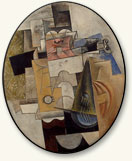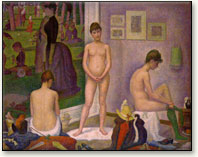Introduction: Modern Notions of Color and Art
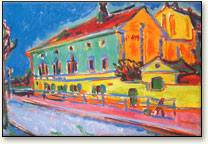
Dresden Buildings (Dance Hall Bellevue), Ernst Ludwig Kirchner, 1909. Kirchner was one of the many artists offering a new vision of the world, based on color.
The development of art is linked to our interest in vision. Modern art emerged in France by artists such as Paul Gauguin(1848-1903), Paul Signac (1863-1935), Vincent van Gogh (1853-1890) and Paul Cézanne (1839-1906) in the second half of the 19th century. During the same period, scientists began to explore how we see. The new understanding of vision influenced the development of art and our understanding of it.
With the artistic and scientific revolutions of the 19th century, the tradition of sublime history painting, inspired by political, spiritual or mythological subjects, lost its dominant position. Likewise the unsparing vision of modern portraiture shows an interest in ‘truth’ rather than formal ‘high art’ values, or presenting an ‘image of power’. Artists now engaged with the depiction of modern life with its sometimes less sublime subject matters, which were increasingly depicted in non-naturalistic colors and forms. By the early 20th century, artists such as Henri Matisse (1839-1954) claimed that color and form could only achieve their full potential if they become independent from the objects they depicted. Importantly, modern artists emphasized the view of each individual artist, and hence, vision.
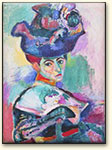
Woman with a Hat, Henri Matisse, 1905. Matisse claimed that color and form could only achieve their full potential when they became independent from the objects they depicted. |
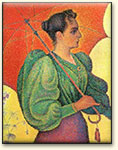
Woman with an Umbrella (Portrait of Signac’s Wife Berthe), Paul Signac, 1893. |
Matisse’s Woman with the Hat (1905, above) is a good example of the “new” ways of coloring — it was considered offensive by the contemporary spectators when it was first exhibited in the Salon d’Automne, Paris, in 1905. The criticism focused on Matisse’s depiction of the woman’s face that is represented in multiple colors that create a mask-like appearance. Did Matisse select his palette randomly?
Matisse’s colors are not arbitrary. Woman with the Hat combines pointillist color with a post-impressionistic technique. Matisse had studied Paul Signac’s use of pure color and his organization of the picture plane through contrasting complementary pairs. In doing so, Matisse creates an energetic, even a tense effect. The pairs of complimentary color are repeated in different parts of the painting. While they structure the work, they also encourage the movement of the spectator’s eye that does not stop at any given point. However, in the process, Matisse moves away from Signac’s pointillist dot. His thick and flat contours borrow from the post-impressionists painters such as Paul Gauguin and Vincent van Gogh rather than from Signac. Thus, for a contemporary spectator, Matisse’s Woman with the Hat appeared less finished than Signac’s painstakingly detailed technique of pointillism. Understanding color and vision helps to explain the work by Matisse and other modern artists, discussed in the following pages.
